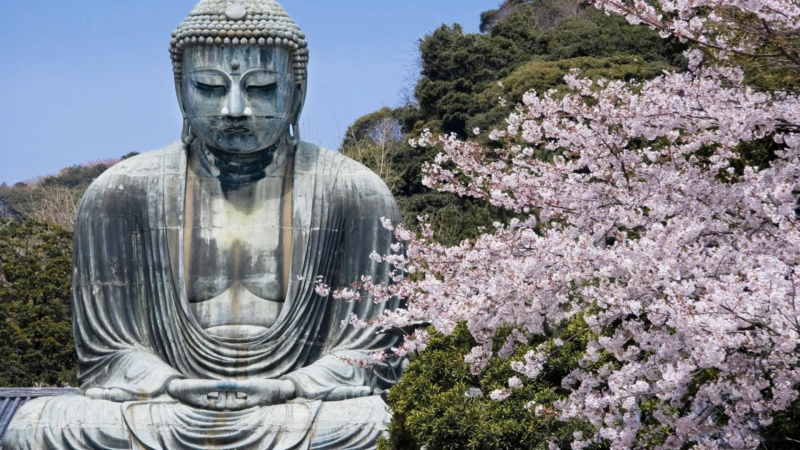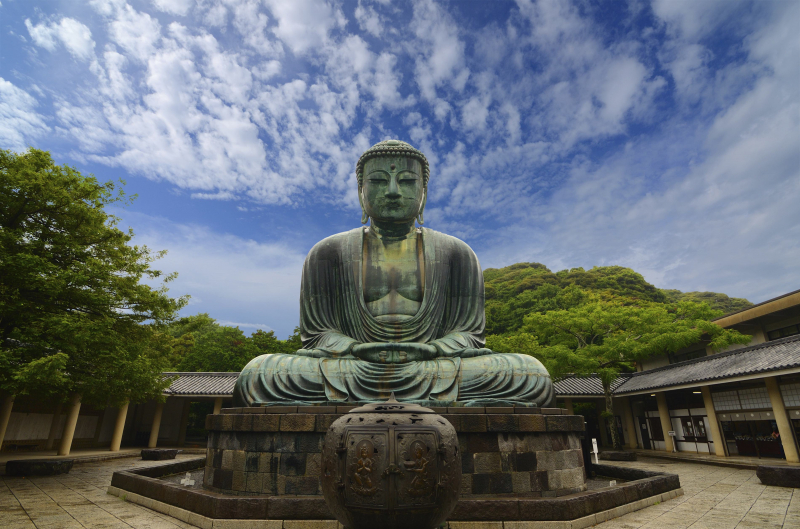The Daibutsu of Kamakura, Japan
The bronzed Great Buddha of Kamakura, also known as the Kamakura Daibutsu, comes from the 13th century and is Japan's second tallest bronze Buddha. The monument is a well-known landmark and one of the most popular tourist attractions in the Kanto region.
The statue is 11.3 meters tall and 121 tons in weight. It is a bronze statue of Amida Buddha that is just slightly less in height than Todaiji's Great Buddha in Nara. The Daibutsu, like the Nara statue, was initially housed inside a temple building after its casting in the 13th century. However, in the 14th and 15th centuries, typhoons, tsunamis, and earthquakes frequently wrecked the hall. So, in 1498, the Amida's caretakers succumbed to the inevitable and abandoned the monument to the elements. It has stood firm ever since, the venerable icon of Kamakura.
The Kamakura Daibutsu is located on the grounds of Kotokuin, a Jodo Sect of Buddhism temple. The Jodo is dedicated to the liberation of all beings, which means that the Great Buddha is available to everyone: saints and sinners, rich and poor, young and old. A Buddha of equal possibilities, bringing all to the Pure Land.
Standing inside the Great Buddha itself, listening to the quiet world outside, is the highlight of any visit. A pair of 1.8-meter-long warazori straw sandals hangs to the right of the Buddha. Children from the same group weave them every three years with the expectation that the Buddha will use them to cross the length and breadth of Japan.
Niomon gate, the beautifully colored entryway where the temple's two protective Deva Kings live, is another point of curiosity. Kangetsudo Hall, located behind the Buddha, was originally part of the imperial palace in 15th-century Seoul before being relocated to Tokyo and finally to Kamakura. It houses an image of Kannon Bosatsu, the Goddess of Mercy, from the Edo era (1603-1867).
Location: 4-2-28, Hase, Kamakura, Japan












